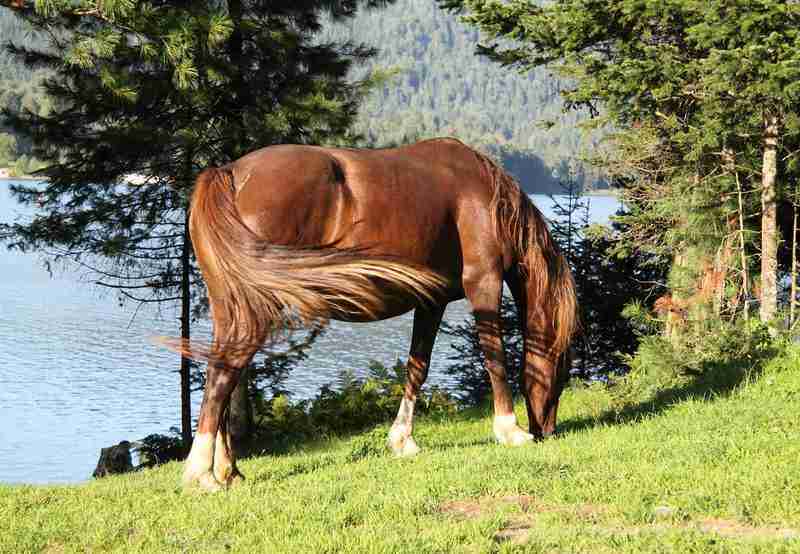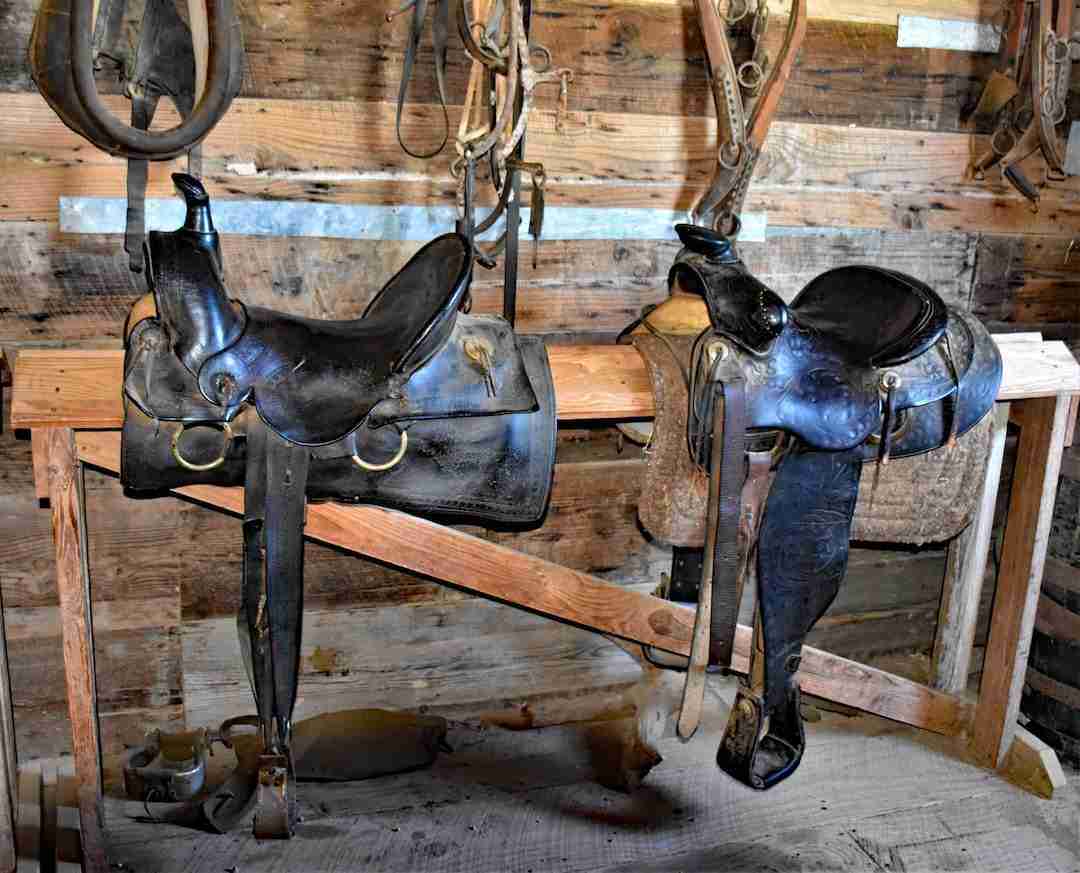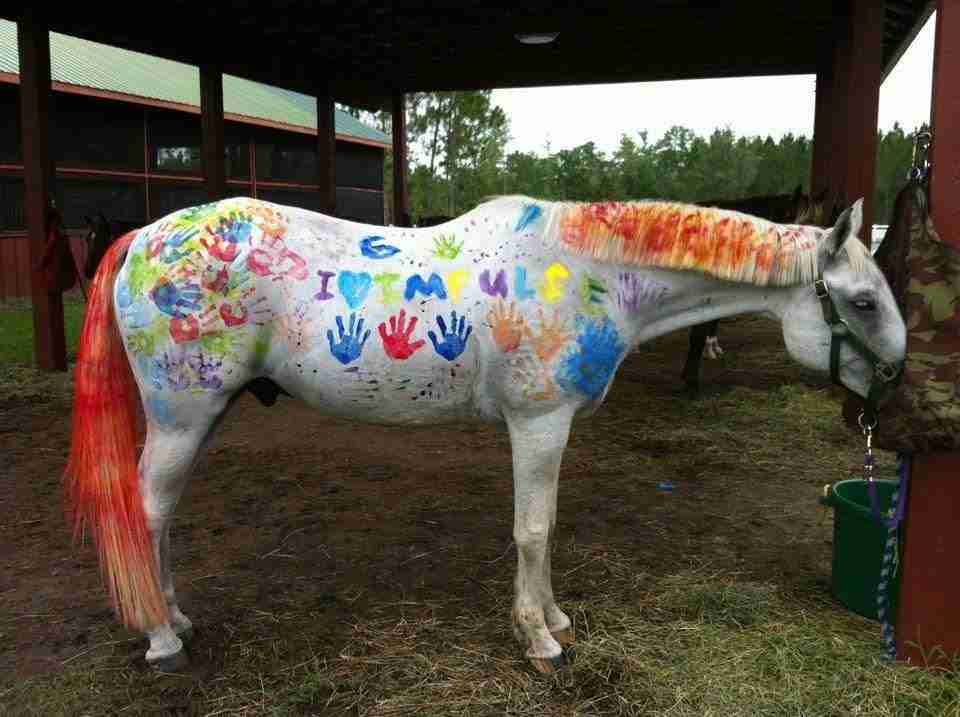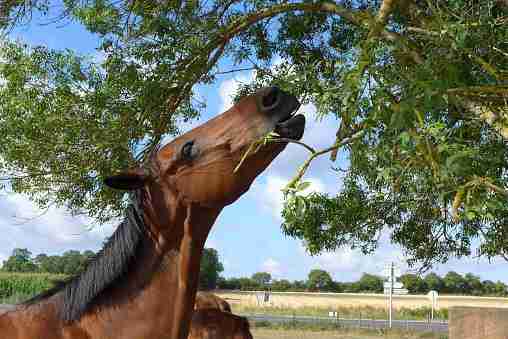Congratulations, your mare is pregnant. The costs of vet appointments can blow your budget out of proportion, and you might want to know how to check your mare’s belly to know if she is getting closer to foaling.
In the 345 days a, mare is pregnant, the belly changes shape by growing more prominent, starting to show at six months of pregnancy. When the foal is ready, about six weeks before foaling, the stomach forms a V-shape, showing that the foal is moving into position. The stomach might even look smaller.
There are a few stages of pregnancy where you can observe the stomach of your mare to see if she is progressing. Watching the belly is not a viable way to check the progress of your mare’s pregnancy. It is important to note that veterinarian checks are inevitable, and a healthy foal depends on his mother getting the best possible prenatal treatment.
Stages Of A Mare’s Belly Shape Changes Before Foaling
A mare’s belly, the same as a woman’s, will increase in size throughout her pregnancy. The gestation period and how their bellies change differ widely from humans. Let’s look at all the stages and what you can expect from the belly shape.

First Signs Of Gestation In Mares
You might have seen the stallion working his magic with your mare or sent her to a stallion to brood. Whichever way, you know your mare should be pregnant. This early, you won’t be able to see any changes in the shape of the mare’s belly and would have to take her to a vet to get tested.
The vet will perform a rectal palpitation to feel the embryo in the uterus at about six weeks. An earlier verification is an ultrasound about 2 to 3 weeks after conception. The most used method is blood and urine tests at about three months after conception, as you might only then start to realize something is going on and your mare might be pregnant.
Three months after conception, the foal’s growth starts to pick up pace, and an ultrasound will show that the embryo is starting to take the shape of a little horse.
Mid-term Or About Six Months Of Gestation In Mares
Mares are pregnant for 11 to 12 months. They breed in Summer and deliver the following Spring or early Summer. Because they carry their foals for an extended period, you will only start to see visible changes by around six months of gestation.
It is essential to ensure your mare gets the correct feed and more than usual, as the mare is growing a little foal inside her. At six months, the foal is big enough for the belly of the mare to start protruding. The belly enlarges gradually as the weeks go by and enter the final stages of pregnancy.
Another essential matter is to ensure your mare does not get fat, as this can increase the risks during labor. The mare is in perfect condition if the belly protrudes, but the rest of its structure is proportionate. It is best to take your mare’s temperature each morning and give it the needed vitamins and minerals to ensure the foal’s growth is on point and the mare’s health is impeccable.

The Last Stretch Of A Mare’s Gestation
At about 315 days (about 10 months) into pregnancy, your mare will show more signs of gestation, and that foaling is close. The belly shape is big, some bigger than others, and some owners will start to panic long before it is foaling time.
One of the ways the belly shape shows something is during the last few weeks before birth. Owners will know the foaling process is closer and should carefully observe the mare’s belly during the last 3 weeks of pregnancy.
During the relaxation phase, the owner will identify that the belly starts to hang, forming a V-shape, or some call it a pendulum shape. The belly goes from round and bulging at the sides to hanging and moving closer to the ground. The V-shape signifies that the foal is starting to turn, and he moves into place, getting ready for birth.
Some breeders sometimes see and feel the foal movement inside the belly when they groom their mare’s belly. Feeling the fetus is a unique occurrence that not all owners have the privilege to experience. Like humans, some mares carry bigger or smaller, and some have more bulging bellies than others. Thus, with some, you might see the movement of the fetus, and with others, not.
You might observe that your mare’s belly looks smaller a few days before birth. Smaller might seem strange, but the foal moves into the pelvis and out of the belly a little, making it a great way to identify that foaling is close.
You will have to take many pictures to conclude the V-shape or smaller belly, and some mares do not show such a significant change that you would even see it. Thus, the belly shape can be an excellent tracking method in some mares, but there are other ways to identify how close the mare is to foaling.
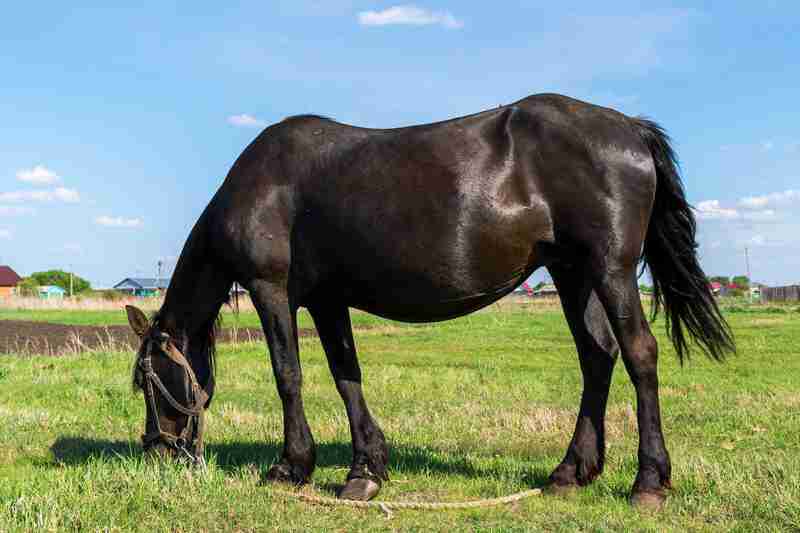
Does A Mare’s Belly Shape Differ When Pregnant With Twins?
Other than the belly being extra prominent and might show earlier than six months of gestation, there are no significant differences. Although twin pregnancies are not as rare in horses as we might believe, it is rare to birth two healthy foals.
Twins in horses are dangerous for the foals and the mare, and vets instead choose to identify as early as 15 days after ovulation with an ultrasound if it is twins. They then cut off one embryo to give the one foal and the mare each a good chance at health and survival.
Research shows that twin pregnancies in horses either lead to abortion as they start to compete for space and nutrition in the womb between five and nine months. The foals are weak, prone to infection, and slower to develop. If the foals reach 8 or 9 months, the mare might go into foaling prematurely and need assistance to deliver them.

Other Signs To Know Your Mare Is Close To Foaling
The belly shape might be how you thought you could see progress in your mare’s pregnancy, but this method might leave you high and dry. There are many other better ways to identify if your mare is close to foaling or not.
- Udder size – this is one of the first signs that foaling is approaching. The mare’s udder is very swollen in the morning when it wakes up and reduces in size as she exercises throughout the day. When you observe that the udder stays large, then foaling is close.
- Discharge from teats – you will see a yellow wax-looking discharge at the teats or forming on the ends. This wax is the colostrum – the first milk the mammary glands produce. After this, milk will start to form and discharge from the teats when foaling is very close.
- Vulva size and shape – as your mare’s body prepares for foaling, the vulva increase in length and elasticity. The change in size happens to prepare for a foal that needs to be pushed through there successfully.
- Relaxation of posterior muscles – With the pelvis’s relaxation, the posterior and tail muscles follow shortly after. You can test this by lifting her tail every day. The closer she is to foaling, the less resistance she will give to you lifting her tail, and she might end up walking around with her tail lifted slightly.
- Mare’s behavior – your mare’s behavior will change when nearing the foaling process. She might show increased respiration, lying down for more extended periods, pacing, grazing more, and separating herself from the herd.
Other Articles You Maybe Interested In:
- What Are Cross Ties For Horses?
- What Is A Grade Horse?
- Why Horses Show Their Teeth
- What Are Ergots And Chestnuts On Horses?
- What Is A Grulla Quarter Horse?
A “due date” for horses is only a number, and the foal will come when they are ready. You can keep your mare as comfortable as possible and give it a safe, warm, and clean environment to give birth when she is ready.
You should monitor the mare as closely as possible without disturbing her or intervening in her foaling process. Their bodies show that they are on their way to foal, but the mare doesn’t give you the heads up that it is coming now. So best to monitor all the signs and vitals to ensure you are ready for the foal to come.
They prefer a quiet space, so best to keep her in a paddock or stall when the signs of foaling start to show and then leave her be. Do not hang around and be visible, as she won’t feel comfortable to foal. The best would be to add a camera to her stall; then, you can view everything without her feeling uncomfortable or that her privacy is invaded.

Conclusion
Your mare’s belly will change throughout her pregnancy, but not significantly enough for you to use this as the main tracking method. It is a fun way to wait and see when the V-shape arrives, then you know the foal is almost ready to join the family.

